- 408-924-7560
- mineta-institute@sjsu.edu
- Donate
Newsletter Vol. 21, Issue 2: Fall 2014
A fond farewell, and a fresh start
Karen E. Philbrick, PhD, Executive Director
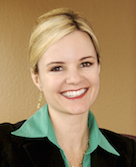 In a poignant moment at the Mineta Transportation Institute's Annual awards banquet and convocation in June, Rod Diridon symbolically handed over the reins of the agency whose success he has guided for the past 23 years. His planned retirement as executive director of MTI and the Mineta National Transit Research Consortium concludes an outstanding career in public service and dedication to the public good.
In a poignant moment at the Mineta Transportation Institute's Annual awards banquet and convocation in June, Rod Diridon symbolically handed over the reins of the agency whose success he has guided for the past 23 years. His planned retirement as executive director of MTI and the Mineta National Transit Research Consortium concludes an outstanding career in public service and dedication to the public good.
He has been honored by dozens of organizations. In January, he received a Lifetime Achievement Award from the Council of University Transportation Centers at its awards banquet in Washington DC. In June, History San Jose named its historic trolley barn after him. Later this year he will be inducted into the American Public Transportation Association (APTA) Hall of Fame.
He is warmly embraced by the Consortium and MTI, where he will continue to offer expert guidance in an emeritus role. We wish him a long, healthy and happy retirement.
Board welcomes new chair
The Consortium's Board of Trustees is pleased to welcome new chair, Stephanie Pinson. As a longtime board member, Ms. Pinson has contributed valuable insights at every meeting. Her roots in the transportation industry run deep. She is president of Gilbert Tweed & Associates in New York City, specializing in executive searches for mobility leaders. She received the gavel from outgoing chair Steve Heminger in June at the Mineta Transportation Institute awards banquet and convocation.
With the co-chair position open, the Trustees elected Nuria Fernandez to the role. Nuria is CEO of Valley Transportation Authority in San Jose, CA, having arrived from a previous position as COO with the New York Metropolitan Transportation Authority. She also served as a senior vice president with CH2M Hill.
As we head into a bright future, I am looking forward to engaging even more energetically with the MTI/MNTRC Board, our university partners, our outstanding team of research and consulting associates, and our dedicated staff.
IN MEMORIAM
MNTRC loses two guiding lights
by Donna Maurillo, Director of Communications & ITT
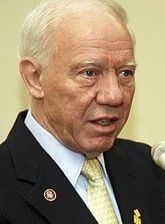 With great sadness, the Mineta National Transit Research Consortium (MNTRC) has lost two of its talented leaders, Congressman James Oberstar (D-Minn.) and Julie Cunningham, CEO of the Council of Minority Transportation Officials (COMTO). Both were influential in guiding MNTRC’s direction, and their passing is a loss not only for us, but for the entire nation.
With great sadness, the Mineta National Transit Research Consortium (MNTRC) has lost two of its talented leaders, Congressman James Oberstar (D-Minn.) and Julie Cunningham, CEO of the Council of Minority Transportation Officials (COMTO). Both were influential in guiding MNTRC’s direction, and their passing is a loss not only for us, but for the entire nation.
Congressman James Oberstar
Congressman Oberstar devoted 36 years in the House, including service as chair of the Transportation Committee. He was the son of a miner, advancing to become the longest-serving congressman in Minnesota’s history. Jim attended MTI/MNTRC board meetings frequently and addressed federal issues that had a bearing on the Consortium’s activities. He was a loquacious speaker, with deep insights regarding Washington’s inner workings, and he provided invaluable guidance to the Institute.
According to the Washington Post, Congressman Vin Weber, also from Minnesota, said that Jim was held in high regard by Republicans because he sought to keep issues before the Transportation Committee free from partisan rancor. In fact, Congressman Weber admitted that he and his wife often voted for Congressman Oberstar.
Jim spoke six languages fluently, and he would often break out into French or Creole given the smallest chance. In fact, he taught Creole to US Marine and Navy officers assigned to Haiti.
The Congressman passed away unexpectedly in his sleep on May 3.

Julie Cunningham, COMTO CEO
Julie Cunningham was known for building healthy, effective partnerships across diverse government and corporate cultures. She also was a strong advocate for a level playing field for minorities, women, and economically disadvantaged people. During her tenure as CEO for COMTO, the organization was awarded the 2005 Disadvantaged Business Advocate of the Year by the US Department of Transportation.
Julie served on the MTI/MNTRC board for several years, with a priority focus on inclusion for all under-represented groups. As such, she helped to ensure that the Consortium maintained its vision to serve everyone who used the nation’s transportation systems.
President Barack Obama chose her to serve on his transition team, and she provided expert testimony before the US Congress, including the House Transportation and Infrastructure Committee, the Congressional Black Caucus, and the Senate Democratic Caucus.
Following a brief illness, Julie passed away on June 24.
Repurposed li-ion batteries show economic promise
Charles Standridge, PhD, Professor and Assistant Dean, Padnos College of Engineering and Computing

When li-ion batteries outlive their use in vehicles, they can be converted for other purposes.
GVSU NEWS – Current research shows that it can be cost-effective to remanufacture lithium-ion (li-ion) batteries once they have outlived their useful life in vehicle applications. But is it also cost-effective to repurpose them? Studies in progress at Grand Valley State University’s (GVSU) School of Engineering indicate that, in fact, this is possible. Recycling alone, however, may not be cost effective.
Cost benefit analysis showed that a vehicle-application remanufactured battery could be produced for about 60 percent of the cost of a new battery. This estimate is based on reasonable and conservative assumptions about capital costs for equipment and factory facilities to support the remanufacturing process.
R&D expenses are a primary component
Applications for repurposed batteries are currently less well defined than for remanufacturing. Thus research and development expenses are a primary component of cost. It was shown that under conservative assumptions for other costs, that repurposing is economic for approximately $82.65 per kWh in research and development costs. This is well within the range for such costs previously estimated in the literature.
In addition, for a lower bound in R&D expenses of $50 per kWh, the lowest economic sales price is shown to be $114.05 per kWh, also well within the sale price range stated in the literature.
However, disassembly of individual cells for recycling was determined not to be economic unless the market price for lithium salts increases about twentyfold to $98.60 per kg, which some believe is possible due to demand outstripping current supply of this metal. But because recycling is required, as eventually each cell in each battery will no longer be usable in any application, it is clear that original, remanufacturing, and repurposing applications will likely need to bear some recycling expenses.
A sufficient supply does exist
It stands to reason that the feasibility of remanufacturing, repurposing, and recycling post-vehicle-application lithium-ion batteries depends both on the availability of such batteries in sufficient number and whether the processes, including the capital investments needed to support them are economical.
There are a variety of demand forecasts for electric vehicles and plug-in hybrid electric vehicles from which the number of post-vehicle-application batteries can be derived. The results showed a sufficient supply of such batteries for remanufacturing, repurposing, and recycling is estimated to reach 1,000,000 per year between 2022 and 2027, depending on the forecast. Expressed as a percent of new car production, the number of post-vehicle-application batteries is forecast to reach 50 percent between 2020 and 2033.
Private industry is helping
The research team is continuing its work in partnership with Sybesma’s Electronics, a third-generation family-owned business in Holland MI to insure industrial applicability. Contributions of equipment and post-vehicle-application batteries have been received from A123 Systems, Johnson Controls, and LG Chem.
The recently published paper “Feasibility Assessment of Remanufacturing, Repurposing, and Recycling of End of Vehicle Application Lithium-ion Batteries” summarizes this work. It is available for free download from the Journal of Industrial Engineering and Management at www.jiem.org.
Do social networks influence transportation choices?
Michael Smart, Asst. Professor, and Nicholas Klein, Postdoctoral Researcher, Rutgers University
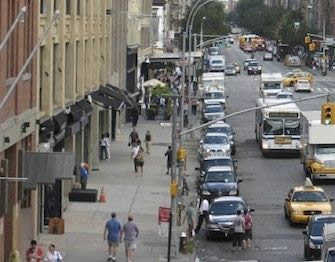
Do social groups in low-income neighborhoods affect travel choices?
RUTGERS NEWS – Transportation and urban planning scholars have frequently perceived car ownership as a binary state – either a household owns a car or it does not. However, current research underway at Rutgers University finds that households, particularly those who are economically marginalized, frequently transition into and out of car ownership.
The study’s goal is to determine whether living in particular neighborhoods with members of one’s own cultural group influences travel patterns. Those groups include immigrants, the elderly, and same-sex partnered households.
Poverty affects frequent car ownership changes
Initial findings suggest that many households transition between owning and not owning cars throughout the survey years. This is particularly true for households in poverty, immigrants to the US, and minorities. Families who are in poverty during all of the survey years are four times more likely to transition from owning a car to having none (or the other way around). Sixty-eight percent of these long-term poor households change auto-ownership status during the 11 years, compared with only 17 percent of households not in poverty.
The project uses longitudinal (observations of the same variables over time), geocoded data to help understand the increased propensity of these groups to use public transit in environments with dense social networks.
Study data goes back 15 years
For this analysis, the research team is using the confidential, geocoded version of the Panel Survey of Income Dynamics (PSID).* Current analysis relies on data from seven waves of survey data collected biannually from 1999 through 2011 including roughly 9,000 families and 22,000 individuals. However, the research team hopes eventually to include data as far back as 1968.
The team is drafting an “initial look” paper to analyze the volatility of car ownership over time among low-income and immigrant populations and racial and ethnic minorities. This paper makes use of the longitudinal nature of the PSID to explore these changes over time as various families’ economic and material circumstances change. The study will be submitted to the 2015 Annual Meeting of the Transportation Research Board.
* PSID is a national study of socioeconomics and health over lifetimes and across generations. Funded by the National Science Foundation, the study began in 1968 with a nationally representative sample of over 18,000 individuals living in 5,000 families in the US. Information on these individuals and their descendants has been collected continuously since then.
San Jose State University News
Research
Preparing for high-speed rail
Karen E. Philbrick, PhD, Executive Director
As California prepares to build its high-speed rail (HSR) system, much of the future success of that system depends on its ability to effect “modal shift – that is, to entice passengers away from other transportation modes, such as air, bus and auto.
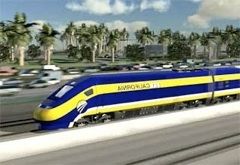
Study suggests HSR may entice the public to switch transportation modes.
MTI research associate Dr. Peter Haas reviewed existing scholarly research on HSR and modal shift, with an emphasis on the most recent findings. His study, Modal Shift and High-Speed Rail: A Review of the Current Literature, points to the conclusion that, under many circumstances, HSR presents a significant competitive challenge to other modes and often provides noteworthy advantages.
HSR can displace other modes
When HSR is the faster alternative—particularly with respect to total time from point of origin to final destination—it typically attracts a large, if not majority share of travelers on a given route. Lower total travel costs for HSR can increase this advantage. Evidence also points to the ability of HSR systems to displace use of automobiles.
These findings raise the question of what can be done to best prepare for the arrival of HSR. To that end, MTI research associate Dr. Anastasis Loukaitou-Sideris has been tasked with studying best practices of blended High Speed Rail (HSR) systems around the world to identify appropriate types of station infrastructure and services that will improve intermodal connectivity and offer optimal travel experience for California’s HSR passengers.
Blended approach requires careful planning
The integration of high-speed trains with existing intercity and commuter/regional rail systems in a blended system offers the advantages of higher connectivity as well as potentially lower capital costs and decreased adverse environmental and urban form impacts.
However, a blended approach requires careful pre-planning to achieve a high degree of coordination in operations and passenger services. It also requires station infrastructure that accommodates smooth transitions between the different modes. While not much research exists on issues of intermodality in the context of HSR systems, a number of blended HSR systems exist and operate successfully around the world.
Study may offer insights for California HSR
Under the working title, Promoting Intermodal Connectivity at California’s High Speed Rail Stations, this in-process study seeks to identify and study successful examples of HSR blended systems from Spain and Germany, two countries with dense HSR networks operating on shared-use tracks. The purpose is to compare different models of blended systems and draw lessons from the ways they have addressed infrastructural, operational, and spatial challenges.
Additionally, the study will examine two major multi-modal transit stations in California—Transbay Terminal in San Francisco and Union Station in Los Angeles-- to understand their current capacities and operations and better appreciate how lessons from international contexts can be adjusted to California realities.
Education
Mineta Summer Transportation Institute helps students move forward
Jack Aiello, STI Coordinator
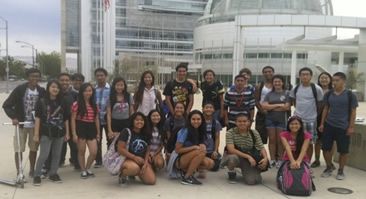
Students took career inspiration from transportation-related sites, such as the Intersolar Exhibit in San Francisco.
A class of 25 Summer Transportation Institute (STI) students learned that transportation careers can make a positive difference in the local environment. This year’s STI included classroom lectures as well as several field trips.
While in training, the high school students earned three college credits for an Introduction to Environmental Studies class from San Jose State University (SJSU). Most of them are from the under-represented populations in the East Side Union High School District. The results of their class work show that they are rising well to the challenge of college-level education.
Several transportation professionals met with the group, including pilots, innovators, and engineers. Some of these professionals are seeking to improve traffic congestion through technology, such as the Spartan Superway, an automated solar-powered podcar system created by SJSU students. Field trips helped the students to engage in several transportation modes, including walking tours, Valley Transportation Authority (VTA) light rail and buses, and private motor coaches. The students also engaged in hands-on activities and presentations.
For example, the walking tour of the LEED Platinum certified San Jose City Hall left the students visibly impressed as they viewed the city from the 18th floor mayor’s office. They also asked many questions of their docents as they stopped at the City Council Chambers. The information and field trips will help them decide on their future transportation careers.
Those field trips included the Bay Area Rapid Transit (BART) construction project in San Jose, the light rail project to the new Levi’s Stadium in Santa Clara, an all-day exploration into aviation careers at Reid Hillview Airport, and to the intersolar exhibits in San Francisco, which had special displays on the Spartan Superway, electric vehicle charging stations, and the 16th anniversary of the solar cell. The costs for most of these silicon-based solar cells have been dramatically reduced by manufacturing equipment produced here in Silicon Valley.
Students also visited the Google corporate campus to learn about the potential for driverless cars and about the many careers in computer sciences that relate to automated transportation. They also learned about California’s high-speed rail project and how it will affect future travel and the environment.
STI benefits these students not only by introducing them to a university campus, but also by helping them become familiar with transportation careers while they are still in high school. They discovered how mass transit systems are helping to solve traffic congestion, reduce greenhouse gases, and providing many excellent careers. They also were introduced to the ways in which local government impacts transportation.
For some students, this was their first introduction to a university and the first time they’d seriously participated in career-related training.
Voters support transit funding
Leo E. Hanifin, PhD, Professor, Department of Mechanical Engineering
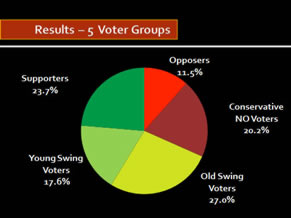
Five distinct voter groups were represented in the survey.
UNIVERSITY OF DETROIT MERCY NEWS – Apparently, the naysayers are wrong when they say voters would not approve public funding for transportation. When the University of Detroit, Mercy conducted a public opinion poll of 799 likely voters, 87% of them said that transit in the region needs improvement. Further, 67% favor using public taxes and fees to support public transit. Those facts originated from an MNTRC project, Understanding and Building Change in Public Opinion Regarding Transit. Survey results were presented at the Regional Transit Authority of Southeast Michigan (RTA) Board meeting on Wednesday, June 18. The RTA covers the four counties that were surveyed.
The study examined voter attitudes regarding the current state of transit, desired improvement, willingness to support, and the reasons that they would support or oppose. The responses were examined by voter location, income, education, gender and race. Cluster analysis yielded five groups with similar attitudes: supporters, young swing voters, older swing voters, conservative "no's," and those who oppose.
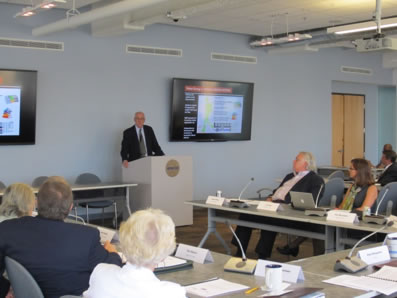
Dr. Leo Hanifin presents survey results at a public meeting.
More detailed results were requested by the RTA board. Consequently, the UDM team is developing a more comprehensive final project report that will provide greater detail. These presentations have the benefit of informing officials and stakeholders about citizen attitudes in southeast Michigan. In turn, the presentations likely will have a positive influence on successful implementation of a regional transit system and related funding. Ongoing analysis of the research findings has been shared with Transportation Riders United, a partner organization in this research, to facilitate its educational campaign.
The research, which will be published later this year, was led by Dr. Leo Hanifin with a team composed of Professor Xiaohui “Kathy” Zhong of UDM and Megan Owens, executive director of Transportation Riders United. The presentation was repeated at the RTA Citizens Advisory Committee.
Developing seamless connections in the urban transit network
Hualiang “Harry” Teng, PhD, Director, Railroad, High Speed Rail, and Transit Initiative
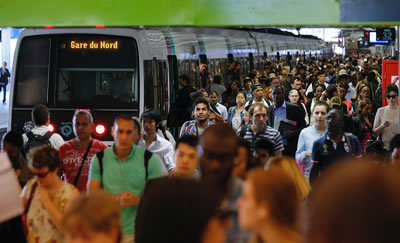
HSR stations with connecting transportation modes have higher ridership.
UNLV NEWS – High-speed rail (HSR) is rapidly becoming a reality in the U.S. But how can planners maximize ridership? One key is to develop multi-modal interconnectivity. That is, if several transportation modes intersect at a given station, transfers will be more convenient, and ridership should increase. However, it’s also important to ensure that the interconnectivity is developed according to best practices.
To that end, the research team at the University of Nevada Las Vegas (UNLV) conducted a study that quantified multimodal connectivity of HSR stations and its impact on ridership in four countries – France, Spain, Japan, and China – where HSR has already been established. That quantifying has set the basis for developing future rail interconnectivity. These findings have important implications for the proposed California and Nevada HSR stations.
Not all connectivity profiles are the same
Analysis showed that multimodal connectivity at HSR stations in different countries presents different profiles. For example, HSR stations in China connect with more bus lines than those in other countries. Relatively, there are more bus stops or terminals provided in France. Transfer times in Japan and China are significantly longer than those in France and Spain. The average bus arrival interval in France is the longest, more than double that of China.
All the connectivity variables considered in this study influence ridership in these four countries in different ways. On the whole, bus, subway, and regional railroad service influence ridership significantly. For instance, the more bus services connected to the station, the higher the ridership. This trend is apparent in three of the four countries, France being the exception.
Various other factors influence ridership
Also, subway, light rail, and traditional rail are modes of high-capacity transportation. Their connection to HSR stations always implies high ridership for high-speed rail. The number of facilities also shows significant impacts on HSR ridership. For instance, the more bus and subway stops, and the more bicycle parking and taxi stands, the higher the ridership. Transfer time also has a significant influence.
In this study, multimodal connectivity is measured by the number of different modes of transportation connected to HSR stations, the number of installed arrival and departure facilities for each mode, the transfer time from connecting modes to boarding platforms at HSR stations, and the arrival time intervals of public transportation modes.
California and Nevada stations can benefit
For California HSR stations, it is recommended that special attention be given to bicycle and pedestrian accommodations. When weighing the tradeoff between building a new station and adapting an existing one, transfer time for all connections should be taken into account. A more convenient fare payment system should be used to facilitate transfer between high-speed rail and other modes of transportation. Coordinating the arrivals and departures of different modes of transportation at high-speed rail stations should be given appropriate consideration.
For the HSR station in Nevada, it is recommended that the station must provide access and accommodations for passengers generated from residents near the station who access the station by walking or biking. In addition, light rail type of transportation is recommended to accommodate peak arrival periods of high-speed trains.
Biodiesel tests show possible use in transit buses
Ashok Kumar, PhD, Chair, Department of Civil Engineering
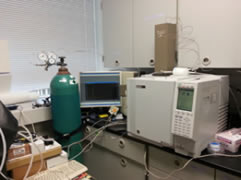
Gas chromatograph (GC)
UNIVERSITY OF TOLEDO NEWS – Biodiesel is an alternative renewable fuel with growing use in transportation.In fact, the Toledo Area Regional Transportation Agency (TARTA) has moved its entire bus fleet to biodiesel. Because of this growing interest, the University of Toledo (UT) has been involved in research on biodiesel emissions for the last nine years. Currently, UT is working on the “Combustion Chemistry of Biodiesel for the Use in Urban Transport Buses” and has been making several presentations to share its incremental discoveries.
Testing continues to add value
So far, the research team has completed several phases of its testing:
- Characterization of emissions (CO and CO2 so far) from different biodiesel types produced from soybean oil, animal fat, and waste cooking oil
- Characterization of physical properties of different biodiesel types produced from soybean oil, animal fat, and waste cooking oil
- Effects of combustion temperature and pressure, blends, and type of feed stocks on emission compositions
- Image analysis of particulate matter (PM) collected from laboratory experiments and TARTA buses running on ultra-low-sulfur diesel (ULSD) fuel blended with 20% soybean oil, by volume
- Elemental analyses of PM collected from TARTA buses
- Analyses of elemental carbon and organic carbon in the PM emissions
Outreach shares the results
As part of their outreach activities, the research team gave several professional presentations:
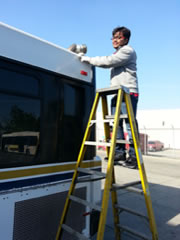
Collecting samples at TARTA
Conference Papers:
- H. Omidvarborna, A. Kumar, D.S. Kim, “Analysis of Particulate Matter (PM) from the Exhaust of Biodiesel Transit Buses under Idling Conditions” (Paper 31870), presented as a student poster at A&WMA Conference, Long Beach CA, June 2014
- H. Omidvarborna, A. Kumar, D.S. Kim, “Experimental Evaluation of a Biodiesel Combustion Model using a Laboratory Reactor” (Paper 31867), presented as a technical poster at A&WMA Conference, Long Beach CA, June 2014
- S.K. Kuppili, D.S. Kim, A. Kumar, “Biodiesel Properties Depending on Blends and Feedstocks: Cloud point, kinematic viscosity and flash point” (Paper 33261), presented as a technical poster at A&WMA Conference, Long Beach CA, June 2014
Presentations:
- Kumar, D.S. Kim, and H. Omidvarborna, “Characterization of Exhaust Particulate Matter from Transit Buses in Toledo, Ohio,” Environmental Seminar, Department of Civil Engineering, Aligarh Muslim University, March 13, 2014.
- D.S. Kim, Biodiesel Research, Chulalongkorn University, Bangkok, Thailand, 2014.
US DOT funds research
The research is funded by a grant from the US Department of Transportation, Research and Innovative Technology Administration through Mineta National Transit Research Consortium (MNTRC). Project director is Ashok Kumar, PhD, Department of Civil Engineering, with Dong-Shik Kim, PhD, Department of Chemical & Environmental Engineering. Mr. Hamid Omidvarborna and Mr. Sudheer Kumar Kuppili are participating in the project for their PhD work.
-
Contact Us
San José State University One Washington Square, San Jose, CA 95192 Phone: 408-924-7560 Email: mineta-institute@sjsu.edu





